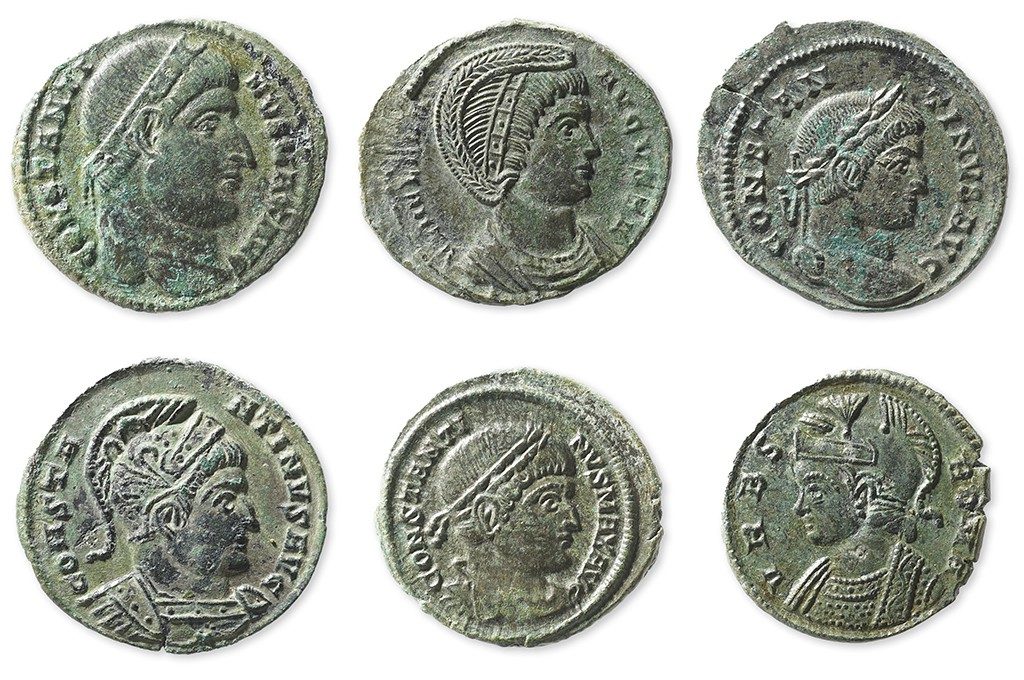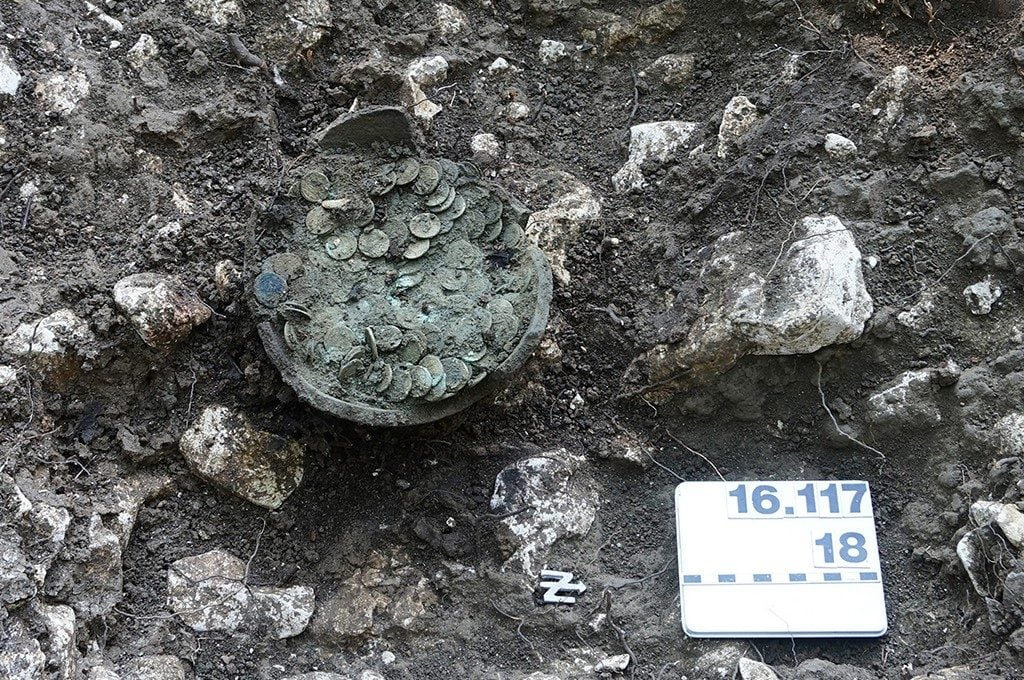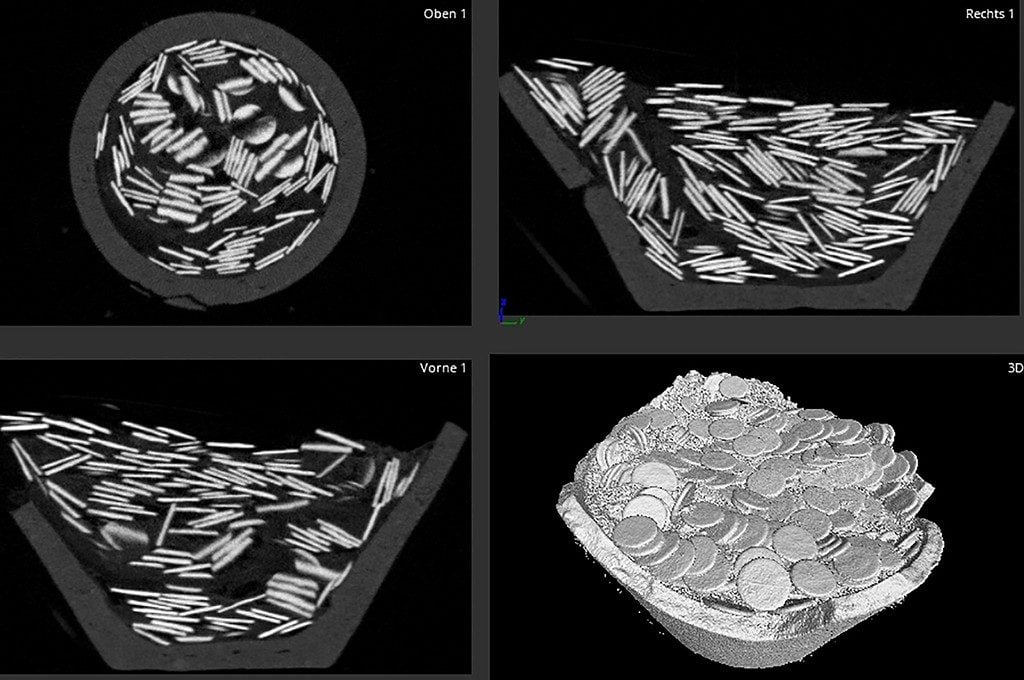Archaeology & History
A Swiss Metal Detectorist Uncovered a Literal Pot of Gold Filled With 1,300 Exceedingly Rare Late Roman Coins
The discovery raises questions about life in the region under Emperor Constantine the Great.

The discovery raises questions about life in the region under Emperor Constantine the Great.

Amah-Rose Abrams

In a rare and stunning discovery, a metal detectorist unearthed more than 1,000 Roman coins in Bubendorf, Switzerland.
Daniel Lüdin was prospecting with his metal detector on the grounds of Wildenstein Castle in Bubendorf when he came upon the trove of 1,290 coins and immediately informed the local body Archeologie Baselland. The archaeologists were then able to extract the finding in its entirety and conclude that the coins were minted in the 4th century, a period from which very few coins have been discovered.
Using computer tomography at the Swiss Federal Laboratories for Materials Testing and Research, scientists were able to penetrate the coins without separating them, making it possible to see what lay between the coins. They essentially found a pot of gold left in a bowl with remnants of leather, suggesting that it could have been an offering left for the gods by more than one party.

Photo: Archeology Baselland.
“For the time when the pot from Bubendorf was hidden, there are hardly any comparable hoards in the entire Roman Empire,” read a statement from Archeologie Baselland. “These years are characterized more by their political stability and some economic recovery. On the one hand, this makes the find very special, but on the other hand it poses further mysteries. For what reasons were the coins buried and why weren’t they recovered?”
The coins were found at a point where three Roman borders met which could suggest an offering in support of peace or protection but there really is no way of known how they came to be there.

The x-ray of the coins. Photo: Archeology Baselland.
The coins are a mix of mostly copper alloy and a bit of silver. It is essentially a bowl of small change, weighing just .04 ozs. Minted during the reign of Emperor Constantine the Great, who governed the Roman Empire from 306-377 C.E., the coins add up to around two months’ salary for a soldier at the time. The coins, dating from 332-355, were left in peacetime—a departure from when offerings and valuables were usually buried, during times of unrest.
This unique discovery appears to raise more questions than it answers, but could shed light on a rare era of peace in early European history.